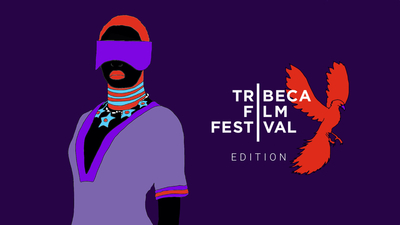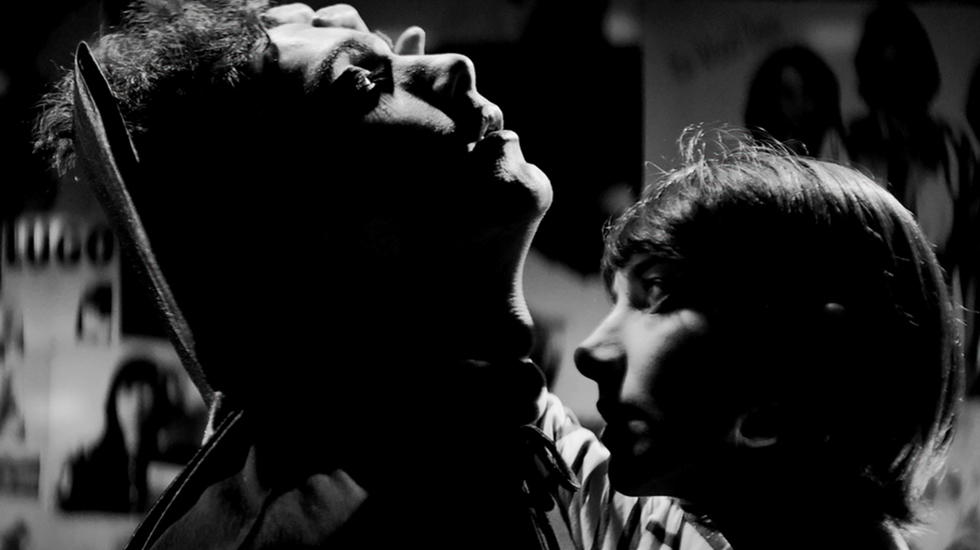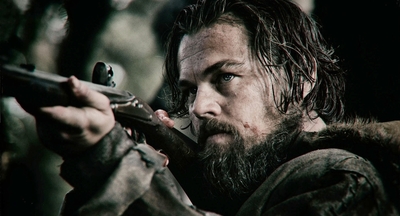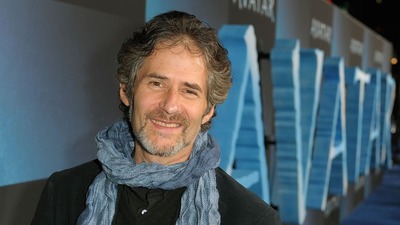
BY ZACHARY WIGON |
Spaghetti Westerns, Vampires and Dreams: Ana Lily Amirpour on Her Debut Feature
Ana Lily Amirpour''s debut feature presents a wild collision of pop-culture iconography.

A sensation when it premiered at Sundance this past January, Ana Lily Amirpour's debut feature, A Girl Walks Home Alone At Night, opens Friday, November 21st on a wave of that inimitable fervor known only as "buzz." For good reason: the moody, noir-ish picture, set in Iran, features a young woman (Sheila Vand) who stalks various misogynistic denizens of the post-apocalyptic town she lives in. That stalking inspires plenty of terror in both her victims and the audience, since this young woman - credited only as "The Girl" - is not simply a young woman, but rather, a vampire. Combining elements of Sergio Leone's spaghetti westerns, vampire stories, film noir and comic books with feminist thematizing and dreamy post-punk tunes on the soundtrack, the film feels like a sensory assault in the manner of some of the most delectable auspicious and stylized debuts. I had the chance to speak recently with Amirpour about the film.
It's like constructing a fairy tale, a comic book world. It's up to you when you make those rules.
Tribeca Film: Your film is set in Iran, but you shot in Bakersfield, California - a rather dramatic stretch of desert. What led to you deciding to shoot your film there?
ALA: Well I grew up in Bakersfield, I had puberty in Bakersfield. I knew about that part of California very well. I knew about all those little weird dried-up small oil towns around there, and I knew I would make the film in one of those towns. I felt like there were a lot of places there that would fit for a middle-of-nowhere desolate ghost town. It has the highest density of oil in California with those cheap oil fields, and I fell in love with the oil fields, the smoke stacks, the refineries.
Tribeca Film: There's something post-apocalyptic about the landscape. How did you cultivate that aesthetic?
ALA: Well, all you need is a pile of dead bodies and it feels pretty post-apocalyptic! You get the sense that image would only be mundane if shit had hit the fan. I don't know how to describe it - it was a place that made sense to me, that that is how it would feel. I knew everything about who lived there, their backstories. It's like constructing a fairy tale, a comic book world. It's up to you when you make those rules.
Tribeca Film: You mentioned it feeling like a comic book world, and I read you wrote a comic to coincide with the release of the film. How did that come together?
ALA: Most of the time people have the comic first, then it becomes a movie, but mine happened kind of simultaneously. When I write a script or design a character I always write their whole history. I do that for all the characters, for the actors and I, so we know who these people are, what kind of life they've lived. So I had 187 years of stories about this vampire, who she was, how she came to be a vampire. So when I was in post one of my producers, Ben Conrad, told me he was starting a comic book branch at his production company, and he asked me if I wanted to turn those backstories into a graphic novel, and I said absolutely. Comics are a dying art form. But we found this really talented artist to do it. I'm into the cerebral, heady comic stuff - Charles Burns, Crumb, stuff like that. I'm so happy that I got to use all of those stories for the character.
I think making a film is kind of like inviting people into your dreams and making them comfortable there.
Tribeca Film: There's a bit of a comic-book feel to how the film was shot, it almost felt a bit like Sin City at times, in that regard. How did you construct the film's visual palette?
ALA: Rumble Fish, the Francis Ford Coppola film, was a bit influence. We were looking at three films, the DP and I - Rumble Fish, Wild At Heart and Once Upon A Time In The West. Also, Sergio Leone westerns were very influential. The film feels less like Sin City to me and more like a Sergio Leone ghost town, a lawless town in the middle of nowhere, a silent protagonist, someone who, you can't fully gauge their moral code, it's not entirely black and white. Also, Gummo was an influence. When I was talking about what this town was - that town in Gummo, the small town, it almost feels like a dark fairy tale - people look strange and talk strange. It feels invented.
Tribeca Film: Sergio Leone is a very clear influence, especially in the film's score. Can you tell me a bit about the manner in which you appropriated different pieces of pop-culture iconography? You have spaghetti westerns, comics, vampire movies, and of course the music selections on the soundtrack, which often have a kind of new-wave, post-punk feel.
ALA: It's a bit like picking your outfit with the clothes you have in your closet. Some clothes are new, some clothes you've had for many years, but you put them together in a way that feels right. I really can't describe it. It's not science, it's just things that I love, things that make sense to me. It's almost like a dream to me. I think making a film is kind of like inviting people into your dreams and making them comfortable there, getting them into that world. But there's no science to it in a way I can really explain.
Sheila is a very special and hypnotic creature, very beautiful, and I could feel a certain kind of loneliness about her.
Tribeca Film: To step back for a moment, how did the film originate for you? The writing process?
ALA: I started with the idea of the girl, it all started with developing the story around her. I knew all the actors and I wrote it for the actors who are in the film. I talked to Sheila before I started writing the script because I wanted her to be the girl. It's a very different thing when you're writing for exactly who you want. It makes it easy for me, because I know her very well, I know how she feels. It was a similar thing for all the cast, I wrote the parts for them.
Tribeca Film: Sheila gives a wonderful performance, there's a gravitas she gives off when she's onscreen. What is it about her as a performer that speaks to you?
ALA: For me, it's not a performance, it's who she is as a human being. I think of the characters in terms of who they are - the girl is a lonely creature. There's something old and young about her at the same time. Sheila is a very special and hypnotic creature, very beautiful, and I could feel a certain kind of loneliness about her. I could look at her eyes, her face, forever. I met her my first year living in LA and she was in two of my short films before this. She's a friend as well.
Tribeca Film: Does knowing the actors personally have a strong impact on how you direct your actors on set? What's that dynamic like, knowing them as well as you do?
ALA: It's always different because the whole process of filmmaking for me is more like sex - you don't fuck two people the same way, you have to figure out how to get off with different people. It's a sexual thing. I'm the one whose job it is to adjust to each person. Knowing them well helps in the same way that it helps if you know the person you're sleeping with - you can be more honest and get more to the point without making detours down the wrong avenues. That's how it is. I'm meticulous about preparing for the film - I know the set design and the costumes, lots of conversations about the characters, and of course the music is huge as well. And once you're there it's about them trusting me. But all the work is done in advance.

